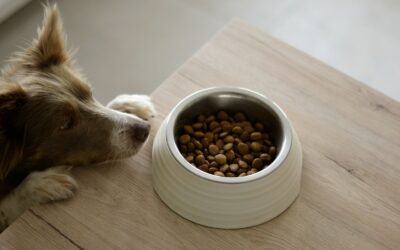Wondering how to socialize a puppy? Welcoming a new puppy into your home is an exhilarating experience. From playfully bounding through your living room to those heart-melting puppy dog eyes, the joys of a new furry family member are boundless. Yet, just as newborn humans require care and guidance, puppies need appropriate socialization to become confident and well-adjusted dogs.
In this comprehensive guide, we’ll explore the importance of intentional socialization and provide clear steps on how to socialize a puppy.

Why is Puppy Socialization Important?
Socialization is a crucial part of a puppy’s early development. It involves exposing your puppy to a wide array of experiences, from other animals and people to environments, to help them feel at ease and safe in the world around them. A well-socialized puppy is more likely to grow into a dog who can handle various situations without undue stress or anxiety. Through socialization, your puppy will learn valuable skills such as communication, problem-solving, and adaptability. A well socialized puppy creates a happier, more relaxed adult dog and a more fulfilling pet-owner relationship.
Ideal Time to Start Socialization in a Puppy’s Life
Experts agree that the socialization process should begin as soon as you bring your puppy home, typically around 8 weeks old. Early experiences make a profound impact, as puppies are more receptive to new encounters at a young age.
Age-Specific Considerations
Youthful exuberance and rapid learning are the hallmarks of puppyhood. Tailoring socialization activities to your puppy’s age and developmental stage is crucial. Be mindful that very young puppies may not have completed their vaccination series, so it’s important to balance socialization with health precautions. Your veterinarian can offer the best advice on vaccination schedules and when your puppy can safely explore the world.

How to Socialize a Puppy with Controlled Introductions
To effectively socialize your puppy with controlled introductions, choose a calm setting initially. Begin by inviting friends and family to your home, ensuring they understand the importance of quiet and gentle interaction. Arm your guests with your puppy’s favorite treats and ask them to squat to the puppy’s level to minimize intimidation.
As your puppy grows more comfortable with home visitors, you can gradually introduce it to neighbors and friendly strangers during short walks. Always observe your puppy’s response, intervening with a comforting voice or touch if they seem anxious. This process teaches your puppy that new human encounters are usually safe and rewarding.
How to Socialize a Puppy with Environment Exposure
Initiate your puppy’s environment exposure in a controlled, secure area of your home. Play a variety of recorded sounds at a low volume and reward your puppy for calm behavior. As your puppy shows signs of habituation, you can introduce them to the backyard or front porch to experience natural ambient noises.
Progress to busier environments like a friend’s house or a quiet street, always ensuring that each new experience is paired with treats and affection. Keep initial outings brief, slowly extending the duration and complexity as your puppy demonstrates confidence.

How to Socialize a Puppy with Positive Reinforcement Techniques
Positive reinforcement is the cornerstone of a successful socialization strategy. Start with a simple command that your puppy can follow successfully in a quiet environment. Reward these positive behaviors immediately with treats, cuddles, or a playful interaction.
As your puppy is exposed to more challenging situations, maintain a cheerful tone and keep the reinforcements frequent. If your puppy seems scared or overwhelmed, ease off and try a simpler task or a quieter environment. Consistently coupling new experiences with positive feedback cements a positive view of the world in your puppy’s developing psyche.
Puppy Socialization Classes and Training Sessions
The value of structured socialization cannot be overstated, and puppy classes offer a significant benefit in this area. At Snouts & Stouts, we understand that early exposure to a variety of dogs and people lays the groundwork for a well-adjusted adult dog. Our puppy classes, designed for dogs older than 16 weeks, ensure your pet engages in positive interactions in a controlled and educational environment.
Dog training sessions guide your puppy in appropriate behaviors and provide socialization with other dogs under professional supervision. Not only do these encounters promote healthy social skills, but they can also prevent the development of fear and aggression.
Attendees of our puppy classes often see remarkable progress in their pet’s confidence and demeanor. To complement our in-person sessions, we also offer webinars that discuss the intricacies of puppy socialization and outline advanced techniques for positive reinforcement.

Playdates with Other Dogs
Regularly scheduled playdates are a key element of a rounded socialization process. Introducing your puppy to well-socialized dogs in a relaxed setting allows them to learn the nuances of canine communication and hierarchy. By keeping initial puppy playdates short, your pup can gradually learn proper play etiquette without becoming overstimulated or exhausted. Monitor these play sessions carefully and always be ready to step in if the play escalates to ensure safety for all involved.
How to Introduce Your Puppy to Dog Parks
Dog parks provide an immersive environment for socializing your puppy, ideal for a puppy who has started on its vaccination series and is ready to meet a wider circle of canine acquaintances. Start by choosing off-peak hours for your first visit to avoid overcrowding, which can be intimidating for a young pup. Upon arrival, keep your puppy on-leash and observe the dynamics of the other dogs from a distance. Assess your puppy’s comfort and interest level before entering the off-leash area. Once inside, allow your puppy to explore near the entrance as you watch their body language closely.
Always watch for signs of discomfort or fatigue in your puppy, and be prepared to intervene if necessary, ensuring the dog park experience remains positive and constructive. Keep initial visits short, gradually increasing the time spent as your puppy becomes more confident. Remember, positive interactions are the goal, and patience here is vital for cultivating a puppy that’s polite and sociable with fellow canines.
Outings to Public Places
To acclimatize your puppy to the diverse world, outings to pet-friendly public places can be highly beneficial. These excursions to dog-friendly cafes, bustling pet stores, and tranquil parks introduce your pet to an array of sensory experiences. Such exposure is crucial for building adult dogs that are adaptable and calm.
A fundamental rule during these outings is to prioritize your puppy’s safety by keeping a watchful eye on their interactions and staying clear of aggressive or potentially unvaccinated animals. With careful observation and guidance, these visits can greatly enhance your puppy’s social repertoire.
How to Handle Fear and Anxiety Around Older Dogs
To effectively support an anxious puppy, focus on building a strong foundation of trust. If a puppy exhibits signs of fear or anxiety during socialization, avoid forcing them into overwhelming scenarios. Instead, create a series of small wins for the puppy by organizing short, positive experiences that don’t incite fear.
Use their favorite toys or treats to make each new introduction an occasion to look forward to. If they become anxious, pause and engage in a familiar activity they enjoy, reassuring them with a calm demeanor. Gradually increase the duration and complexity of exposure as the puppy’s confidence builds.

Managing Aggression and Shyness in Puppies
Should your puppy display aggression, it’s critical to address it early as it can escalate if not managed properly. Consult with a certified professional dog trainer or a veterinary behaviorist, and implement training programs tailored to your puppy’s needs.
Respect comfort zones and celebrate small steps, such as successfully interacting with a new person or pet. Building confidence in a shy puppy often involves passive observation from a distance before moving closer, always under controlled and positive circumstances. Remember, gentle persistence is key when helping your pet overcome intimidation.
Socialization Journaling for Success
Keeping a detailed socialization journal serves multiple purposes. It allows you to note your puppy’s reactions to different experiences, tailoring future activities to those that need more exposure. This log should include not only places and faces but also sounds, surfaces, and any object your puppy might encounter in the future. A journal can help you steadily up the ante on your puppy’s experiences and ensures proper coverage of all areas of socialization. It’s also a fantastic way to celebrate milestones and reflect on the journey you’ve embarked on together.

Now You Know How to Socialize a Puppy
A well-socialized dog is a gift to itself and its owner. By investing time and care into their formative experiences, you pave the way for a lifetime of enjoyable walks, stress-free vet visits, and harmonious interactions with people and pets alike. For new puppy owners, the journey of socialization may seem daunting, but it’s a profoundly rewarding process that solidifies the bond between you and your pet. Start early, be patient, and relish in the shared moments of growth. Your puppy is not just a pet; it’s a potential friend and companion for life.








